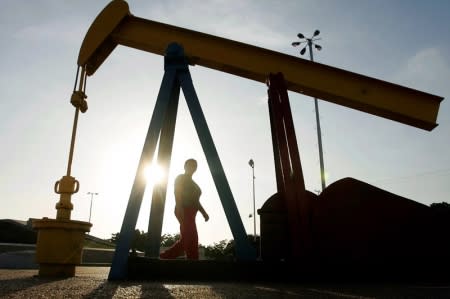Oil Prices Flat In Asia Morning As Traders Eye Mixed Cues

Investing.com - Oil prices were mostly flat Wednesday morning in Asia, with traders in the region reacting to mixed cues from data that suggests demand will increase this year but so will supply.
Crude Oil WTI Futures for March delivery were trading at $59.17 a barrel mid-morning in Asia, down 0.03% but zig-zagging between mild gains and losses. Brent crude futures for April delivery, traded in London, were up 0.13% at $62.80 per barrel in mid-morning.
A stronger U.S. dollar, faster-than-anticipated U.S. production and a surge in demand from China have supported oil prices over the last week but oil remains well off recent highs, likely due to lingering concerns of oversupply.
Brent started February at $69.65 and WTI started at $65.80.
On Tuesday, International Energy Agency (IEA) raised both its forecast for oil demand this year by 7.7% but also warned that production is rising, particularly in the U.S. and that could put downward pressure on oil. The IEA expects global demand to increase by 1.4 million barrels per day (bpd) through 2018.
The IEA's comments followed numbers last week that pointed to the U.S. emerging as the second-largest producer of oil, ahead of Saudi Arabia. U.S. production has increased by more than 20% since the middle of 2016 to more than 10 million bpd, inching on top producer Russia.
Pushing prices up were expectations of more demand this year not only from the IEA but also from the Organization of Petroleum Exporting Countries (OPEC), which said earlier this week that demand would increase faster than expected. OPEC forecast an increase of 1.59 bpd in global demand, an increase of 600,000 bpd from earlier forecasts.
Also supporting oil prices was ongoing weakness in the dollar, which may have helped demand.
Strong global economic fundamentals may also be supporting oil prices, or at least preventing further drops. Japan reported Wednesday an eighth consecutive quarter of growth, even though the expansion there slowed in the quarter to December.
Demand from China is also increasing with oil exports from the second largest economy topping imports from the US.
Next month, China has plans to launch yuan-denominated oil futures on the Shanghai International Energy Exchange. The oil futures would be launched March 26.
Keeping oil's rebound in check, however, were numbers from The American Petroleum Institute (API) on Tuesday.
The API said inventories of crude in the US rose by 3.9 million barrels in the week to Feb. 9 to 422.4 million, far exceeding analysts' expectations of a 2.8-million-barrel increase. The API said gasoline inventories increased by 4.6 million barrels compared to expectations of a 1.2-million-barrel increase.
The API numbers have underscored fears of an oversupply.
Related Articles
Asia's soaring gas demand opens window for new LNG projects
Gold Prices Rise To Hit One-Week High; All Eyes on U.S. Inflation
Crude Oil Prices Mixed In Asia With WTI Edging Down After API Estimates

 Yahoo Finance
Yahoo Finance 